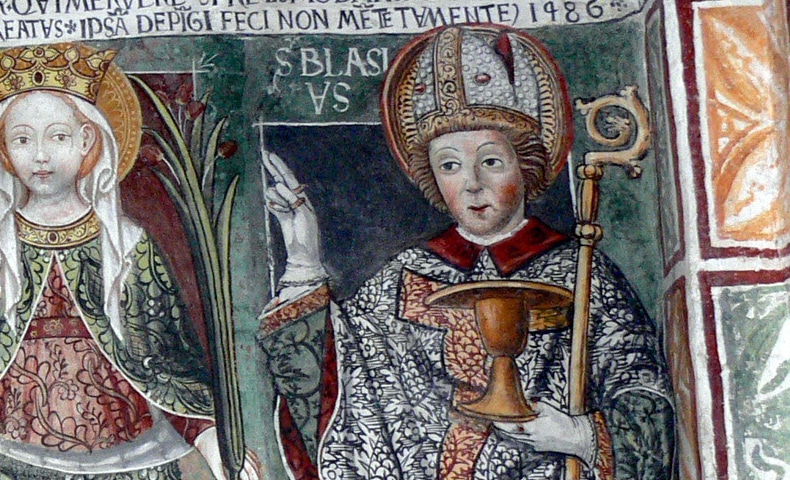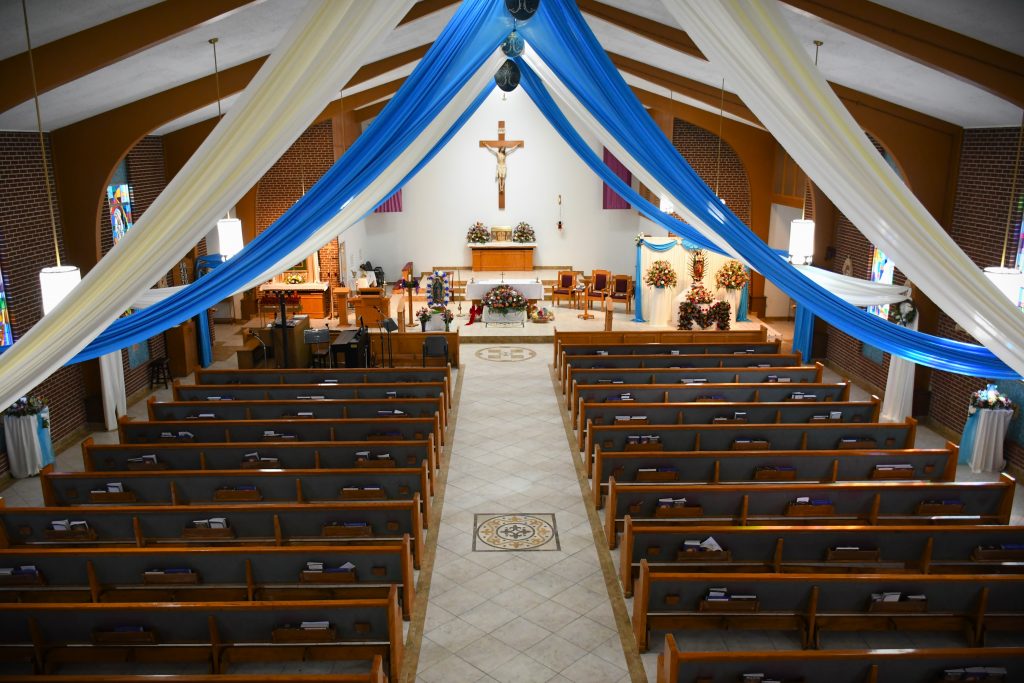Blessing of the throats is a ritual prescribed and authorized by the Church, usually observed on the feast day of Saint Blaise (February 3rd).
The practice comes from an event in the life of St. Blaise preceding his martyrdom. Blaise, who had studied philosophy in his youth, was a doctor in Sebaste in Armenia, the city of his birth, who exercised his art with miraculous ability, good-will, and piety. When the bishop of the city died, he was chosen to succeed him, with the acclamation of all the people. His holiness was manifest through many miracles: from all around, people came to him to find cures for their spirit and their body; even wild animals came in herds to receive his blessing. In 316, Agricola, the governor of Cappadocia and of Lesser Armenia, having arrived in Sebastia at the order of the emperor Licinius to kill the Christians, arrested the bishop. As he was being led to prison, a mother set her only son, choking to death of a fish-bone, at his feet, and the child was cured straight away. Regardless, the governor, unable to make Blaise renounce his faith, put him to death.
One variation is the consecration by prayer of two candles, which are crossed and held over the heads or against the throats of the people being blessed. Another is to dip the wick of a candle in consecrated oil, and to touch the throats with the wick. The following blessing is usually given: “Through the intercession of St. Blaise, may God preserve you from throat troubles and every other evil”, sometimes followed by “In the name of the Father, Son and Holy Spirit” as the priest makes the sign of the cross over the recipient.


